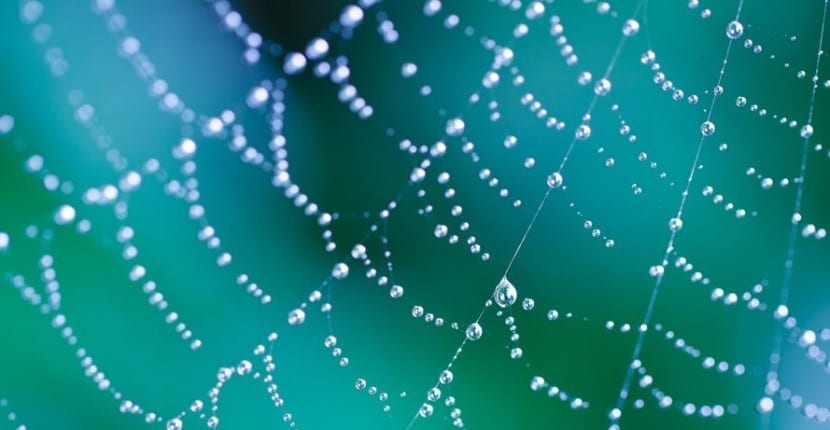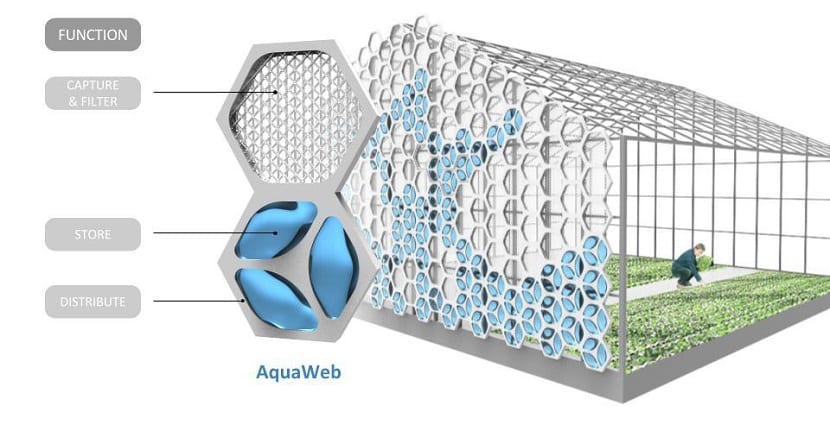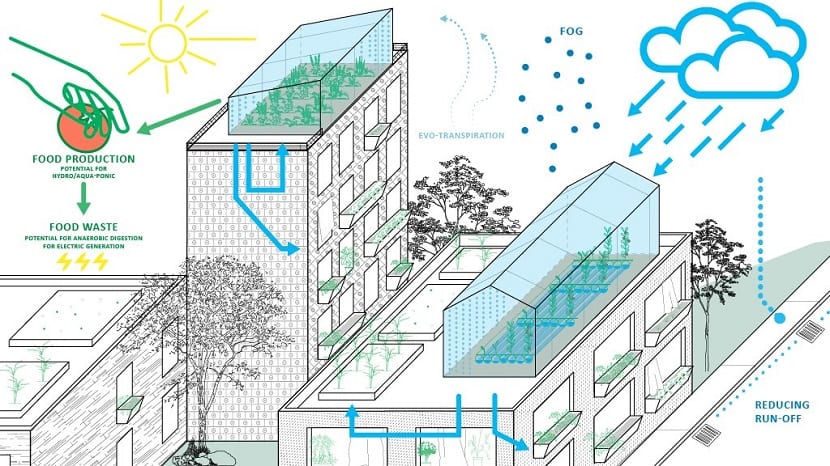
One of the great problems that society seems to have today lies precisely in its growth and in how we can achieve that each of its individuals has their basic needs covered. Leaving aside the way in which we will feed so many millions of people in the not too distant future, the truth is that, before addressing this question, we must think about how get drinking water in large quantities in a much cleaner and safer way for all.
With this in mind, today I want to talk to you about aqua web, a new system that has been designed by a team of experts from NexLoop and that it will be used to get water in a much more natural way, that is, it will be used to retain rainwater and even the humidity present in the environment to later be able to manage it in the treatment and generation of those famous urban crops that so often the 'fashion' seem to be in all the great cities of the world.

AquaWeb is a project created and financed by the NexLoop company
Personally, I have to admit that a project like this has caught my attention since I am firmly of the kind of person who thinks that projects like AquaWeb are what we need as a society to to continue growing in a much more sustainable way. It may seem that for this purpose there are many fields that urgently need a change, although we have to start with something and, you never know if technology like the one presented in this project can serve another type of purpose.
As for the project itself, before continuing, tell you that its creators have been awarded the Ray of Hope 2017 thanks to the fact that the same, or at least as announced by those responsible for the project, is inspired by the way nature manages to retain fresh water, specifically in how different living beings do this type of work, such as bees, fungi, plants and even spiders.

AquaWeb is inspired by the way living things collect, store and transport water
The idea they had in NexLoop was to look closely at how certain beings present in nature were able to get fresh water in a simple way. The first thing they decided to focus their study on was the the way spiders weave their webs to absorb the water from the mist. Once they replicated this step, they focused on being able to design a system capable of storing all this water in a massive way, at which point they were inspired by how certain plants, such as the ground anemone, they can resist droughts.
Once it was learned how to capture water and store it in large quantities, the time came to think about how to distribute it efficiently and for this the team decided to be inspired by the way in which mycorrhizal fungi they are capable of transporting water and nutrients to all species near their location that need them.
To finish and give shape, finally, to AquaWeb, it was time to provide the project with a solid structure, at which point a large number of possible solutions were sought and proposed although, unanimously, the entire team finally decided to opt for a solution similar in concept and structure to how bees create their own honeycombs due to the efficiency of these hexagonal shapes as well as being a modular design.
Thanks to the union of all these architectures, already present in nature, it has been achieved that AquaWeb can be a viable solution to the great problem that today practically all of our cities have regarding the use and expenditure of energy, especially if we take into account what several studies published say that by the year 2050 the population on Earth will be 9.000 million people, of which 7 out of 10 will reside in urban areas.